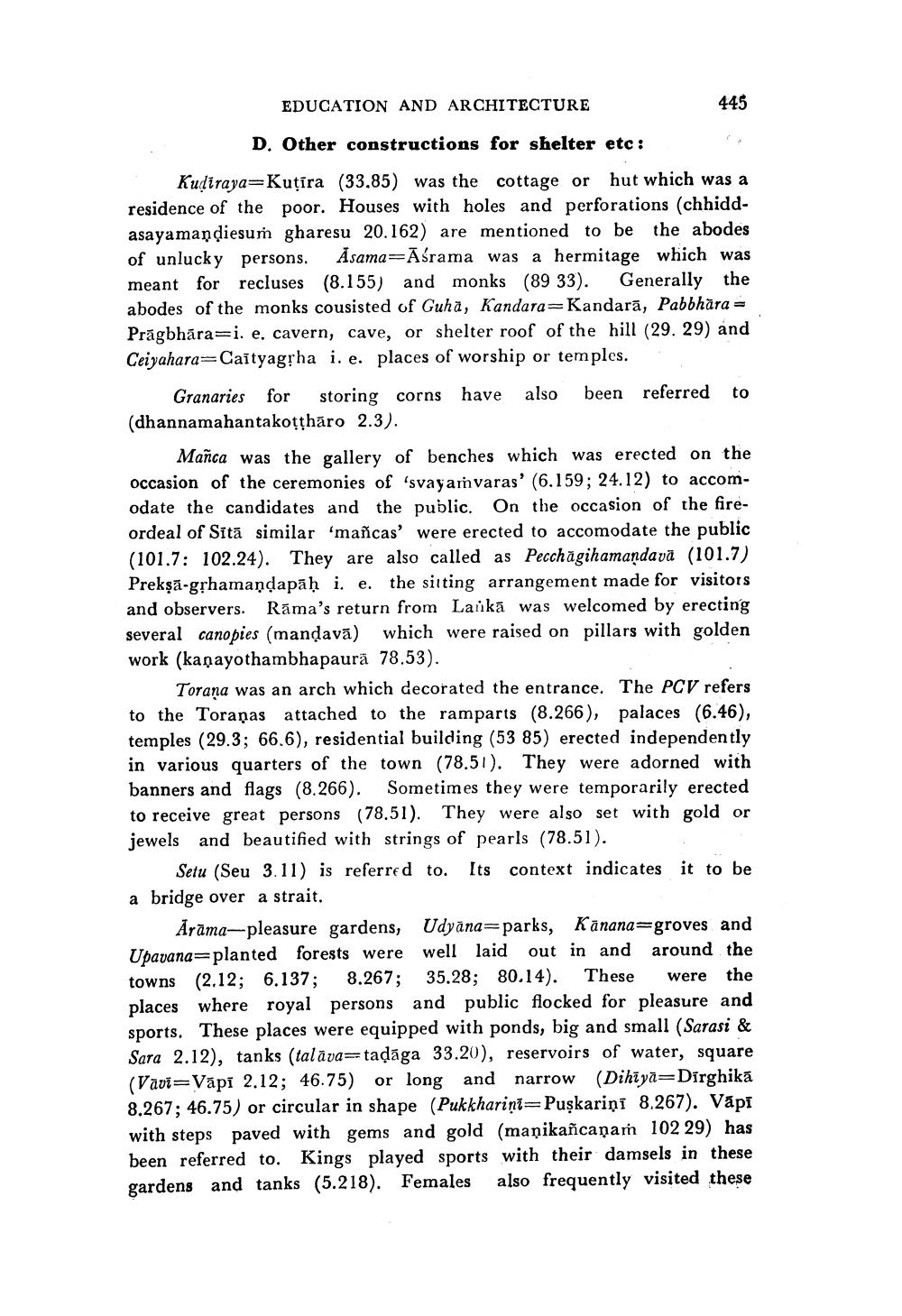________________
445
EDUCATION AND ARCHITECTURE
D. Other constructions for shelter etc:
Kudiraya Kutira (33.85) was the cottage or hut which was a residence of the poor. Houses with holes and perforations (chhiddasayamandiesum gharesu 20.162) are mentioned to be the abodes of unlucky persons. Asama Asrama was a hermitage which was meant for recluses (8.155) and monks (89 33). Generally the abodes of the monks cousisted of Guha, Kandara- Kandara, Pabbhāra = Prägbhāra i. e. cavern, cave, or shelter roof of the hill (29. 29) and Ceiyahara Caityagṛha i. e. places of worship or temples.
also
been referred
Granaries for have storing corns (dhannamahantakoṭṭhāro 2.3).
Mañca was the gallery of benches which was erected on the occasion of the ceremonies of 'svayamvaras' (6.159; 24.12) to accomodate the candidates and the public. On the occasion of the fireordeal of Sita similar 'mañcas' were erected to accomodate the public (101.7: 102.24). They are also called as Pecchagihamandavā (101.7) Prekṣa-gṛhamandapāḥ i. e. the sitting arrangement made for visitors and observers. Rama's return from Lanka was welcomed by erecting several canopies (mandavā) which were raised on pillars with golden work (kanayothambhapaura 78.53).
to
Torana was an arch which decorated the entrance. The PCV refers to the Toraņas attached to the ramparts (8.266), palaces (6.46), temples (29.3; 66.6), residential building (53 85) erected independently in various quarters of the town (78.51). They were adorned with banners and flags (8.266). Sometimes they were temporarily erected to receive great persons (78.51). They were also set with gold or jewels and beautified with strings of pearls (78.51).
Setu (Seu 3.11) is referred to. Its context indicates it to be a bridge over a strait.
were
Arama-pleasure gardens, Udyana-parks, Kanana-groves and Upavana planted forests were well laid out in and around the 8.267; These 35.28; 80.14). towns (2.12; 6.137; the places where royal persons and public flocked for pleasure and sports. These places were equipped with ponds, big and small (Sarasi & Sara 2.12), tanks (talāva taḍāga 33.20), reservoirs of water, square (Vavi Vapi 2.12; 46.75) or long and (Dihiya Dirghikā 8.267; 46.75) or circular in shape (Pukkharini Puşkariņi 8.267). Vāpī with steps paved with gems and gold (maņikañcaņaṁ 102 29) has been referred to. Kings played sports with their damsels in these gardens and tanks (5.218). Females also frequently visited these
narrow




